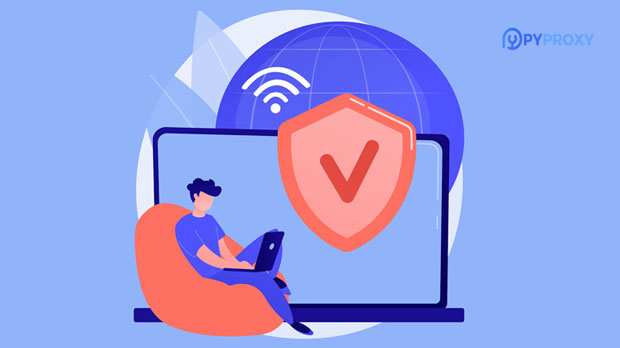PYProxy vs ProxyEmpire Rotating residential proxies, which one is suitable for large-scale crawling tasks?
When considering which residential proxy provider— PYPROXY or ProxyEmpire—is more suitable for large-scale web scraping tasks, it is essential to evaluate various factors. residential proxies play a crucial role in allowing web scrapers to bypass restrictions like IP blocks, CAPTCHAs, and rate-limiting imposed by websites. As web scraping becomes increasingly essential for data mining, market research, and competitive analysis, the choice between PYProxy and ProxyEmpire depends on factors such as proxy pool size, performance, pricing, and customer support. In this article, we will delve deep into these two proxy services to assess which is more appropriate for handling extensive web scraping operations. Introduction to Residential Proxies for Large-Scale Web ScrapingWeb scraping refers to the process of extracting data from websites for analysis and research purposes. It is widely used by businesses, researchers, and developers to gather valuable insights from publicly available web data. However, websites often implement measures to restrict access, such as blocking specific IP addresses or using CAPTCHAs to prevent automated scraping.Residential proxies are an essential tool to bypass these restrictions. Unlike data center proxies, which originate from server farms, residential proxies come from real residential devices, making them appear as legitimate users to websites. This helps in avoiding detection, thus enabling uninterrupted scraping on a large scale. Two major residential proxy providers, PYProxy and ProxyEmpire, offer solutions tailored to web scraping needs. But which one is better for large-scale scraping? Let’s explore.PYProxy vs ProxyEmpire: Key Features ComparisonBoth PYProxy and ProxyEmpire offer residential proxy services with large proxy pools, but there are key differences that impact their suitability for large-scale web scraping tasks.1. Proxy Pool Size and Geographic DistributionFor large-scale web scraping, one of the most critical factors is the size of the proxy pool. The larger the pool, the more diverse the IP addresses available for scraping, which helps to avoid rate-limiting and IP bans.- PYProxy: This service provides an extensive network of residential proxies, with access to millions of unique IP addresses spread across different countries and cities. It offers a diverse range of locations, which is crucial for scraping localized data without getting blocked. PYProxy's residential proxy pool is known for its scale, making it a solid choice for large-scale scraping.- ProxyEmpire: ProxyEmpire also boasts a large proxy pool, but its geographic coverage is more focused on high-demand locations. While it offers millions of residential IPs, the network may not be as globally diverse as PYProxy’s. However, for specific regions, ProxyEmpire can provide highly reliable and fast proxy connections, making it ideal for focused scraping tasks in those areas.For large-scale scraping, PYProxy’s larger and more globally diverse proxy pool may be better suited for tasks that require scraping across different countries and regions.2. Speed and PerformanceThe speed of the proxies is another important consideration, especially when running large-scale web scraping operations. Slow proxy connections can lead to delays, which is not ideal when dealing with large volumes of data.- PYProxy: PYProxy provides fast and reliable proxies with minimal latency. The company’s extensive infrastructure ensures that its residential proxies maintain high performance even under heavy usage. This makes it a good option for scraping tasks that require high-speed data extraction.- ProxyEmpire: ProxyEmpire’s proxies are also fast, but their performance can vary based on the region and network load. In areas with high demand, users may experience occasional slowdowns, although these issues are usually temporary. Overall, ProxyEmpire offers decent speed, but it may not be as consistently fast as PYProxy across all locations.For large-scale scraping, PYProxy's superior speed and performance across a wide range of regions give it an edge over ProxyEmpire.3. Rotation Mechanism and ReliabilityAn efficient rotation mechanism ensures that web scraping tasks are uninterrupted, as it helps avoid IP bans or detection. This is especially important when scraping large amounts of data from a variety of sources.- PYProxy: PYProxy offers automatic IP rotation with its residential proxy service. The proxies rotate seamlessly after each request or after a specific period, reducing the risk of detection. PYProxy also provides sticky sessions, allowing users to maintain a consistent IP address during a session if needed. This ensures reliability and stability, which is vital for large-scale scraping.- ProxyEmpire: ProxyEmpire also has an automatic rotation system that periodically changes IPs to prevent bans. However, the service might not offer as robust rotation flexibility as PYProxy. In addition, ProxyEmpire’s sticky session capabilities might not be as seamless, potentially causing occasional issues for scraping tasks that require consistent IPs.PYProxy stands out in terms of reliable rotation mechanisms, making it a more dependable option for large-scale web scraping projects.4. Pricing and Cost-EffectivenessCost is always a crucial factor when choosing a proxy provider, especially for large-scale scraping tasks that involve significant amounts of traffic. It’s important to choose a service that provides good value without sacrificing quality.- PYProxy: PYProxy’s pricing is competitive for the quality and scale of its residential proxy network. While it may be slightly more expensive than other providers, the price is justified by its performance, global proxy pool, and rotation mechanisms. PYProxy offers various pricing plans depending on the level of service, making it suitable for both small and large-scale scraping tasks.- ProxyEmpire: ProxyEmpire offers flexible pricing options as well, and while it may be more affordable than PYProxy in certain cases, it could require more careful management to ensure cost-effectiveness. The pricing structure is based on bandwidth usage, which can add up quickly for large-scale scraping tasks. For users focused on specific regions, ProxyEmpire might offer more cost-effective plans.For large-scale scraping, the cost of PYProxy may be higher, but its superior features and performance make it a better overall investment in the long run.5. Customer Support and ServiceEffective customer support is crucial when dealing with large-scale web scraping tasks, as issues can arise during the process.- PYProxy: PYProxy is known for its excellent customer support, offering 24/7 assistance to help troubleshoot any issues. Whether you encounter technical problems, need assistance with setup, or require advice on scraping strategies, PYProxy’s support team is highly responsive and knowledgeable.- ProxyEmpire: ProxyEmpire also offers good customer support, but their response times might be slower compared to PYProxy. While they have dedicated support for issues, their team might not be as accessible or responsive for urgent matters, especially for large-scale tasks.For large-scale operations, the superior customer support offered by PYProxy can be a decisive factor in ensuring smooth scraping tasks.Conclusion: Which Is Better for Large-Scale Web Scraping?When it comes to large-scale web scraping tasks, PYProxy outperforms ProxyEmpire in several critical areas. PYProxy offers a larger, more globally distributed proxy pool, faster speeds, more reliable IP rotation, and excellent customer support. While ProxyEmpire may offer cost-effective options for smaller, region-specific tasks, PYProxy’s comprehensive feature set and reliability make it the better choice for large-scale scraping projects.Ultimately, if you require robust, scalable, and consistent performance for web scraping across multiple regions, PYProxy should be your go-to provider.
2025-02-24
























































